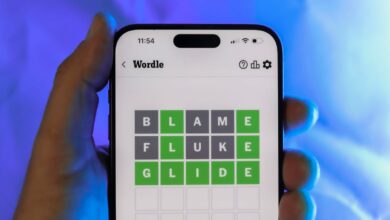Are you eligible for social security disability insurance? Here’s how to apply

Social Security Disability Insurance, or SSDI, is a program for disabled workers, adult children, and widows or widowers that provides monthly payments to recipients. The program typically requires a qualifying diagnosis that prevents an individual from working for at least one year or a diagnosis that is expected to result in death.
However, simply meeting the minimum requirements does not automatically guarantee that you will receive SSDI. Instead, applicants must provide a significant amount of evidence to confirm qualification, and the process itself can be lengthy. Below, we fill you in on the details of eligibility and how to apply for SSDI.
For more information, please consult the Social Security monthly payment schedule and the Supplementary Social Security Income payment schedule.
Which conditions qualify for disability insurance through Social Security?
Qualifying for SSDI isn’t as simple as you might think. Given the variety of conditions that can keep you from working, there’s no set list that will automatically disqualify you if you don’t check all or even some of the boxes. However, some specific conditions do qualify automatically, as long as you meet the right diagnostic requirements.
The Social Security Blue Book, or Disability Evaluation Under Social Security, is a directory that lists approved disabilities. For adults, they are divided into 14 categories.
- Cancer (leukemia, lymphoma, multiple myeloma, breast cancer and prostate cancer)
- Cardiovascular system (congenital heart defects and heart failure)
- Congenital conditions affecting multiple body systems (non-mosaic Down syndrome)
- Digestive problems (bowel or liver disease)
- Endocrine disorders (diabetes, thyroid disorders, hyperglycemia and hypoglycemia)
- Genitourinary disorders (chronic kidney disease)
- Hematological disorders (sickle cell anemia, thrombosis and hemophilia)
- Immune system disorders (HIV, inflammatory arthritis and lupus)
- Mental disorders (bipolar disorder, dementia, depression and intellectual disabilities)
- Musculoskeletal disorders (spinal disorders or amputations)
- Neurological disorders (Parkinson’s disease, epilepsy, multiple sclerosis and traumatic brain injury)
- Respiratory disorders (asthma, cystic fibrosis and chronic obstructive pulmonary disease, also known as COPD)
- Skin conditions (burns, dermatitis and ichthyosis)
- Special senses and speech (poor hearing, vision and speech)
The same categories apply for children, and include low birth weight (LBW) and stunting (FTT). The qualification for children is slightly different, as no evidence is required that the disability prevents them from working. Instead, evidence is required that the condition causes or is likely to cause the individual to have a serious functional limitation for at least one year.
How do I apply for disability insurance?
Before you apply for SSDI, make sure you have everything ready for the process. You will need extensive documentation about your disability, diagnosis and employment history. Gather everything you can in advance so you don’t have to search for it later.
You can apply for Social Security Disability Insurance online, by phone at 1-800-772-1213, or by visiting an office. local Social Security ServiceIf you choose to visit the practice, it may be useful to call in advance, as you will probably need an appointment.
If you have applied for SSDI within the last 60 days and have been denied, you will automatically be denied again, so please be patient during the process. Applicants must also not already be receiving Social Security benefits before applying for SSDI.
What could be a reason why my SSDI application is rejected?
Between 2010 and 2019 the average was the denial rate for SSDI benefits was 67%There are several reasons why your application may be denied. Below is a short list of factors that may contribute to a denial.
- Reapply after rejection instead of to file an appeal
- Insufficient medical evidence to support the diagnosis of a disability
- A decrease in value that is not expected to last for 12 months
- A limitation that is not considered serious
- The applicant is able to perform his or her usual duties
- Applicant is able to perform another type of work
The applicant has a disability as a result of:
Or, the applicant:
- Not working
- Does not follow prescribed treatment
- Do not wish to develop the claim further
- Return to substantial work before disability can be determined
Are there any other programs outside of SSDI?
Recipients of Social Security disability benefits may also be eligible for Supplementary income from social security benefits if they meet certain criteria. In an agency report of 2022SSA research found that about one in 10 SSDI recipients also had SSI as a supplemental source of income.
Funded by the Treasury Department and administered by the SSA, Supplemental Security Income also has strict eligibility requirements. It is generally provided to people with low incomes and resources. And while SSDI is a benefit earned through Social Security taxes withheld during your employment history, SSI is not, and you can still qualify if you have never worked or paid Social Security taxes.
While the maximum payment for SSI recipients in 2024 is $943 for an individual and $1,415 for a couple, other factors can reduce your monthly benefit. Your income, your living situation, and the income of certain family members can affect your SSI payment.
Find out how to check your eligibility and apply for supplemental income.
For more information about Social Security, read about whether you have to repay an overpaid amount to Social Security and the four ways you can lose your Social Security benefits.




